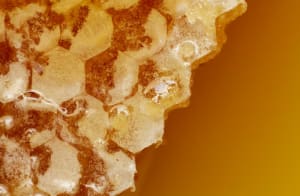About Manuka Honey Crystallisation and its Shelf life
Honey, a timeless pantry staple renowned for its natural sweetness and myriad health benefits, has long been a subject of curiosity regarding its shelf life and potential for spoilage. In this guide, we delve into the science behind honey expiration and answer the burning question: Can honey expire or go bad?
Honey Crystallization Explained
Honey crystallisation, often mistaken for spoilage, is a natural phenomenon that occurs when glucose molecules in honey form into crystals over time. This process is influenced by various factors, including temperature and the ratio of glucose to water in the honey. Despite its granular appearance, crystallised honey remains safe to consume and can be easily restored to its liquid state through gentle warming.
Raw Honey Vs. Processed Honey: Unveiling the Differences
The distinction between raw honey and processed honey lies in their production methods and nutritional profiles. Raw honey, such as Mieland® Manuka Honey, is harvested and packaged without undergoing pasteurisation, preserving its natural enzymes, antioxidants, and other beneficial compounds naturally found in Manuka honey. In contrast, honey that undergoes pasteurization, may compromise its nutritional integrity, unique properties and flavor. Honey pasteurization involves heating the honey to a specific temperature, typically around 63°C (145°F) to 71°C (160°F), and maintaining it at that temperature for a certain duration, usually between 30 minutes to an hour.
Proper Storage Tips for Prolonging Honey’s Shelf Life
At its core, honey is a concentrated solution of natural sugars, primarily glucose and fructose, with a water content of around 17-20%. This low moisture content, combined with honey’s natural acidity (pH 3.2-4.5), creates an inhospitable environment for bacteria and other microorganisms. However, introduction of moisture in honey may create good environment for bacteria to grow, thus it is recommended to use a clean and dry utensil to scoop honey from the jar. To avoid crystallisation and maintain its quality and flavor store your Mieland® Manuka Honey in a cool, dry place away from direct sunlight. Ensure the jar is tightly sealed to prevent moisture absorption and contamination. While honey may darken in color and develop a stronger flavor over time, these changes are purely cosmetic and do not indicate spoilage.
In conclusion, while honey may undergo changes in appearance and texture over time, it does not truly expire or spoil. By understanding the science behind honey crystallisation, the differences between raw and processed honey, and implementing proper storage practices, you can ensure that your supply of Mieland® Manuka Honey remains a cherished pantry staple for years to come.
Sources:
Honey as Nutrient and Functional Food: A Review. Journal of the American College of Nutrition
Microbial Quality and Antimicrobial Activity of Manuka Honey in Comparison with Other Commercial Honeys





